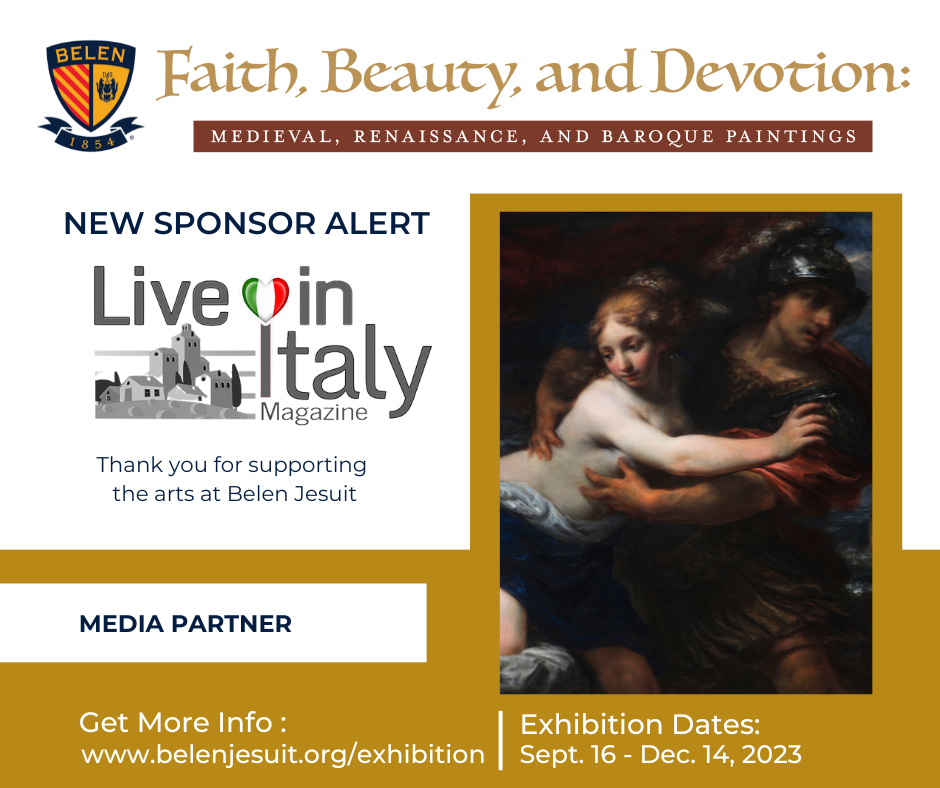At number 39b in Rome‘s Via Oslavia there is a building, looking no different than the others: yellow, not too tall, façade slightly peeling off. It wouldn’t have occurred to anyone that inside there is a work of art the size of an entire apartment.
After being closed for three decades, Casa Balla has finally opened its doors to the public, and on the 150th anniversary of its creator’s birth too. It is the home of Italian Futurist painter Giacomo Balla, which he and his family inhabited from 1929 until the early 1990s. Accompanying the revival of the flat and celebrating its importance is the exhibition organized by the MAXXI Museum in the Italian capital. Together, the two sites provide the full picture behind an exciting chapter in art history, donned by the legend of Futurism.
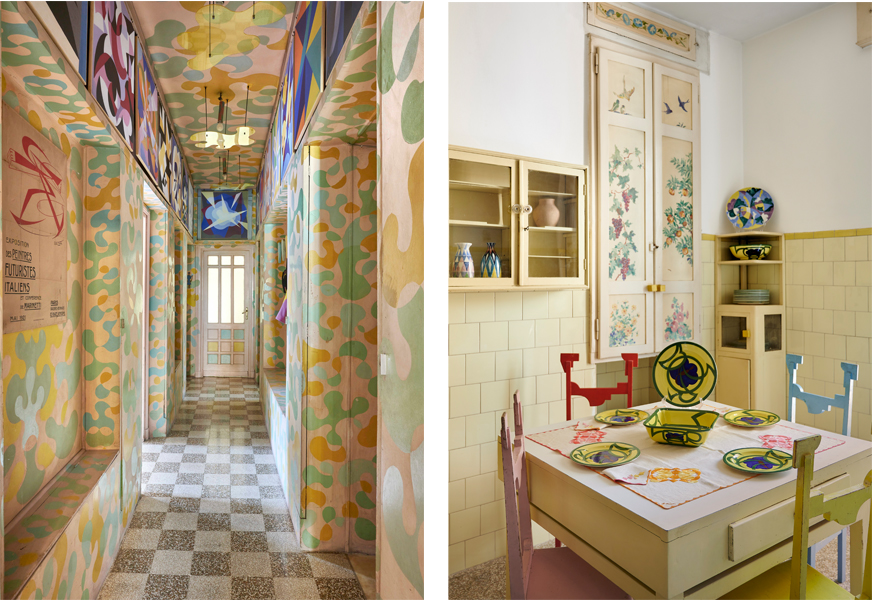
The Casa Balla in Rome
Born in Turin in 1871, Giacomo Balla was an Italian painter, sculptor, poet, and art teacher. His art belongs to Futurism, an art movement that originated in Italy in the early 20th century. The proponents of this style were interested in speed, dynamism, industrialism and the development of technology. But while other artists of the circle preferred to express these concepts through depictions of cars or airplanes, Balla chose a more abstract approach. His paintings, and later sculptures, depicted light and movement through intertwining colors and shapes, in lively, energetic compositions.
In 1915, Giacomo Balla joined another iconic Italian artist, Fortunato Depero, in signing the Futurist Manifesto. Conceived by theorist Filippo Tommaso Marinetti, the statement announced the group’s intention to reconstruct the universe, and to recreate it entirely. By giving “flesh and blood to the invisible, the impalpable, the imponderable, the imperceptible,” the artists declared their ambition to create an art that would be the “dynamic, simultaneous, plastic, noise-ist expression of universal vibrations.”
This is to give an insight into the mind that came to create Casa Balla. However, although the most famous, Giacomo was not the only artist in the Balla family. He and his wife, Elisa Marcucci’s two daughters, Luce and Elica, (both painters) also lived in the apartment in the heart of the Della Vittoria quartiere. In fact, after Balla’s death in 1958, it was them who looked after the house, and their own contributions to the incredible visual aesthetic of the flat are omnipresent.
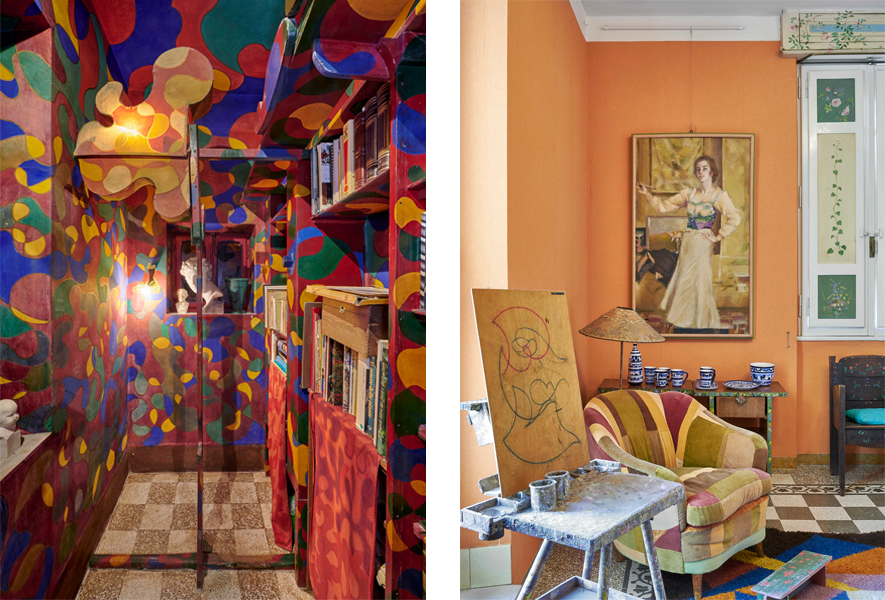
According to curators Bartolomeo Pietromarchi and Domitilla Dardi, Casa Balla is “the artist’s kaleidoscopic, experimental universe.” The family managed to turn the bourgeois apartment into a unique work of art in its every corner. This transformation is announced already at the door, where the “FuturBalla” plaque appends. Once inside, the house immerses the visitors into itself. The long hallway is vibrantly painted top-to-bottom, with a row of actual paintings hanging higher up, while clothes matching in style in turn hang from custom-made racks below.
In fact, the Balla family made everything specifically for Casa Balla: furniture and wallpaper, lamps and decorations, fittings and tiles, clothes and shelves, objects of different kinds intended for use in daily life. The space, soaking in light and an array of hues, continuously journeys between being an inhabiting place and an artist studio. Numerous easels stand tall in the middle of the living room, as if someone was just there at work, next to a lively armchair or a discreet, yet beautifully designed bed. In the kitchen, brightly colored chairs surround a table with self-made utensils, plates, and glasses. The teal-painted bathroom perhaps impresses just as much as the almost delirious book shelves in the next room.

A number of Balla’s own paintings, drawings, and sculptures, as well as those by Elica and Luce, are everywhere. Albeit being significant artworks that bear witness to the different phases of the artist’s research, it is as though they fail to stand out. After all, Casa Balla is an artwork in its own right, its every element more endearing than the previous, coming together in a “total,” hand-made universe.
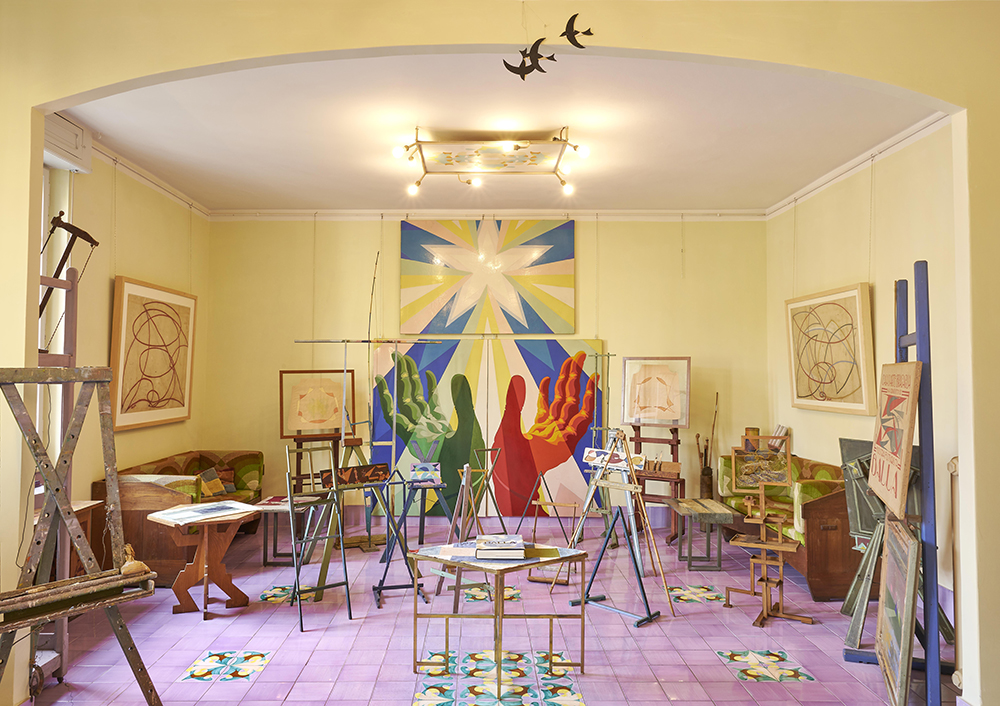
From the House to the Universe and Back
After Giacomo’s death in 1958, Elica and Luce extended Casa Balla’s legacy until their own demises in 1993 and 1994 respectively. The Special Superintendence for Archaeology, Fine Arts and Landscape of Rome declared Casa Balla to be of historical interest in 2004. Indeed, this wonderful project represents a gift to the city of Rome and its community, artistic and beyond.
Investigating the influence of Casa Balla further is an exhibition on view at MAXXI Museum’s Gallery 5 in Rome. Under the title “Casa Balla: From the House to the Universe and Back,” tapestries, drawings, sketches, furniture and furnishings originally displayed at Casa Balla will dialogue with eight new productions by contemporary international architects, artists and designers. Next to some of Giacomo Balla’s important originals from private collections, which have been brought together for the first time and are now accessible to the public, there are contemporary visions of his creations.
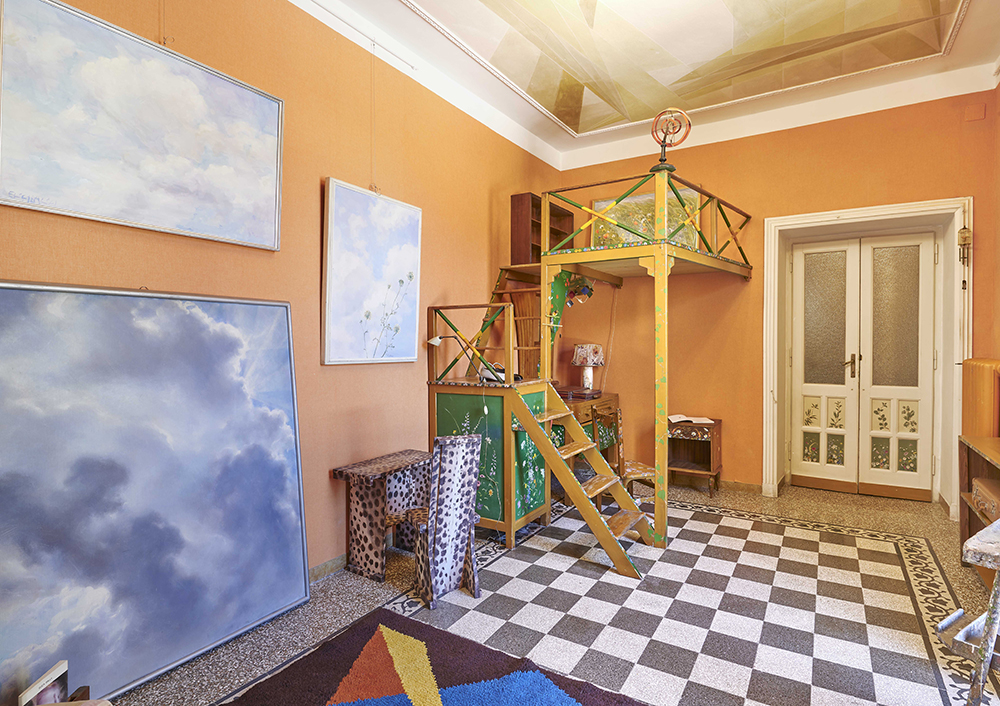
For instance, of special mention is a film that the artists Ila Bêka and Louise Lemoine made in Casa Balla itself, or the artwork by Alex Cecchetti that invites the audience to dance while wearing the skirts of traditional Sufi whirling dervishes. Emiliano Maggi has created three sculptures in wood, bronze and mirrored glass, each titled “Notturno,” which recall Balla’s interest in the dreamlike and imaginative dimension of sleep and night. Carlo Benvenuto’s body of photographs creates a rarefied atmosphere by depicting domestic objects from his home that evoke the everyday life of Casa Balla.
For those who can’t make it, there is the film version of the Space Popular digital work, a virtual reconstruction of Casa Balla designed without ever seeing the physical space, but only through the suggestions of stories and images. The work is available in its entirety online.
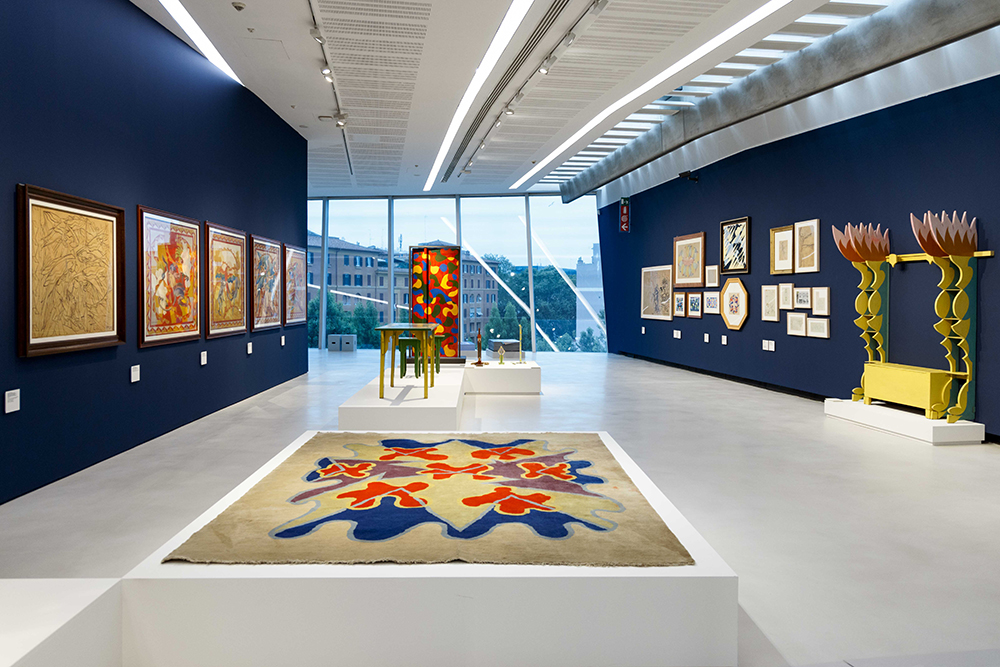
Visit Casa Balla in Rome
As of Friday 25 June, it will be possible to visit Casa Balla every weekend until Sunday 21 November. The visits are arranged in different time slots for groups of 8 people. Booking is required at www.maxxi.art.
The exhibition “Casa Balla: From the House to the Universe and Back” is on view at the MAXXI Museum in Rome until 21 November, 2021.
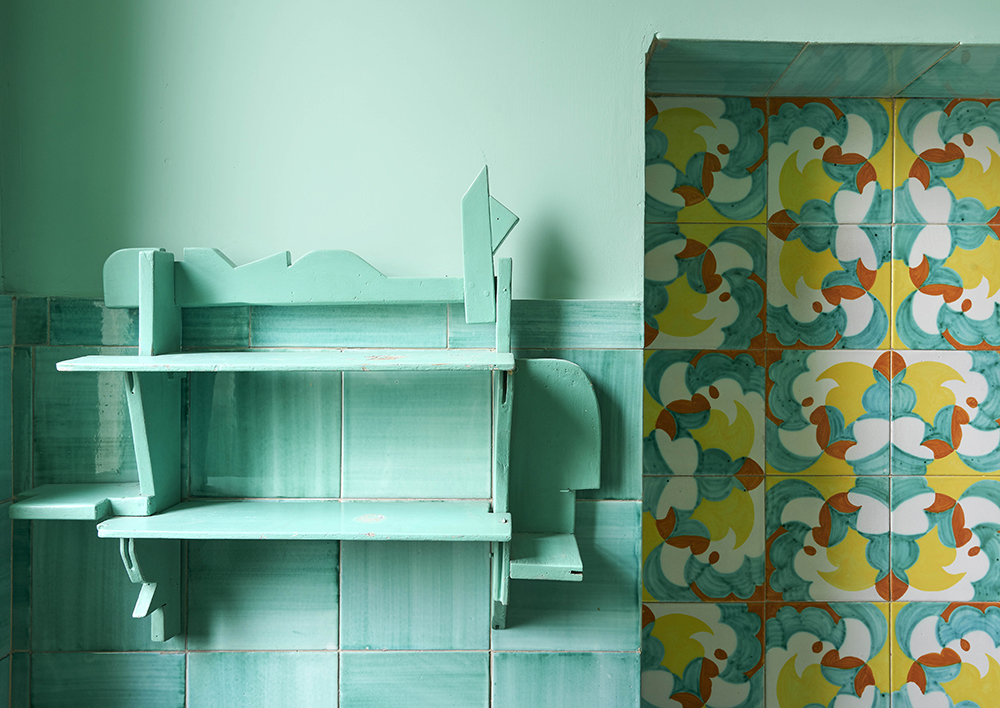
You may also enjoy reading…
9 Art Exhibitions To See in Italy in Summer 2021
“Taking Time” by Armen Agop at Flora Bigai in Pietrasanta


